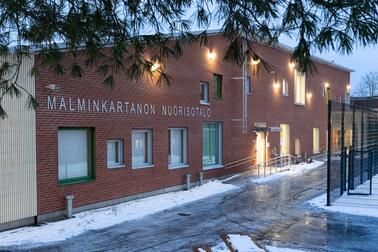
In negotiations led by Mayor Daniel Sazonov (NCP), the parties on Helsinki’s City Board have arrived at a consensus on the content of the new City Strategy. Participants in the negotiation were representatives of the following City Board parties: the National Coalition Party (NCP), the Social Democratic Party (SDP), the Greens, the Left Alliance and the Swedish People’s Party (SPP).
“The new City Strategy is an invitation for everyone to join in the building of a Helsinki we can be proud of. I am particularly pleased with our shared decision to prioritise children and young people. We will secure the necessary resources and make new investments in the wellbeing, learning and growth environments of all children and young people,” said Helsinki Mayor Daniel Sazonov.
“Another central decision was to give economic policy a more significant role by making it one of the City Strategy's five key priorities. Outlined in the strategy are several measures that aim to make Helsinki the best possible place to develop new ideas and create growing businesses. We also devote considerable attention to making the city centre the true heart of Helsinki, an interesting place that people want to come to and where they enjoy themselves,” the mayor continued.
The other key priorities in the City Strategy focus on cultivating a smooth day-to-day life and functional services; strengthening pleasantness and community in each of Helsinki’s distinctive neighbourhoods; and the prevention of further segregation.
“The city will continue its work to ensure that Helsinki remains one of the least segregated European capitals well into the future. The goal of Helsinki's urban development is to build a city that evolves in a sustainable, responsible and balanced way,” said Mayor Sazonov.
In addition to the five key priorities listed above, the City Strategy is divided into five cornerstone chapters that outline cross-cutting themes such as the city’s financial management, climate crisis mitigation and nature conservation, and security and preparedness.
“The City Strategy will also secure the sustainability of the city’s finances. We are doubling the productivity targets for the City of Helsinki’s operations, while also removing core services at the Education Division and Culture and Leisure Division from the scope of these targets. This decision systematically bolsters the financing of services aimed at children and young people. We will measure our investment levels, so we safeguard the sustainability of the city’s finances over the long term. There will also be no increase to Helsinki residents’ taxes in the next four years by a city decision,” Sazonov said.
The third component of the new Helsinki City Strategy is devoted to the city’s operational methods. It lays out the trustworthy and service-oriented approach the city maintains when it comes to its residents and stakeholders. This part of the strategy also describes the city's values, such as bilingualism and its commitment to equality and non-discrimination.
“I would like to thank each of the parties that participated in the negotiations. Coming up with ambitious goals requires clear direction and a good spirit of cooperation. The joint result of our negotiations is an excellent demonstration of Helsinki's good political culture,” the Mayor of Helsinki concluded.
The full result of the City Board negotiations is available (in Finnish) on the city’s hel.fi website.
A Helsinki we can be proud of (PDF)
The City Council will vote to confirm the Helsinki City Strategy on 27 August.



